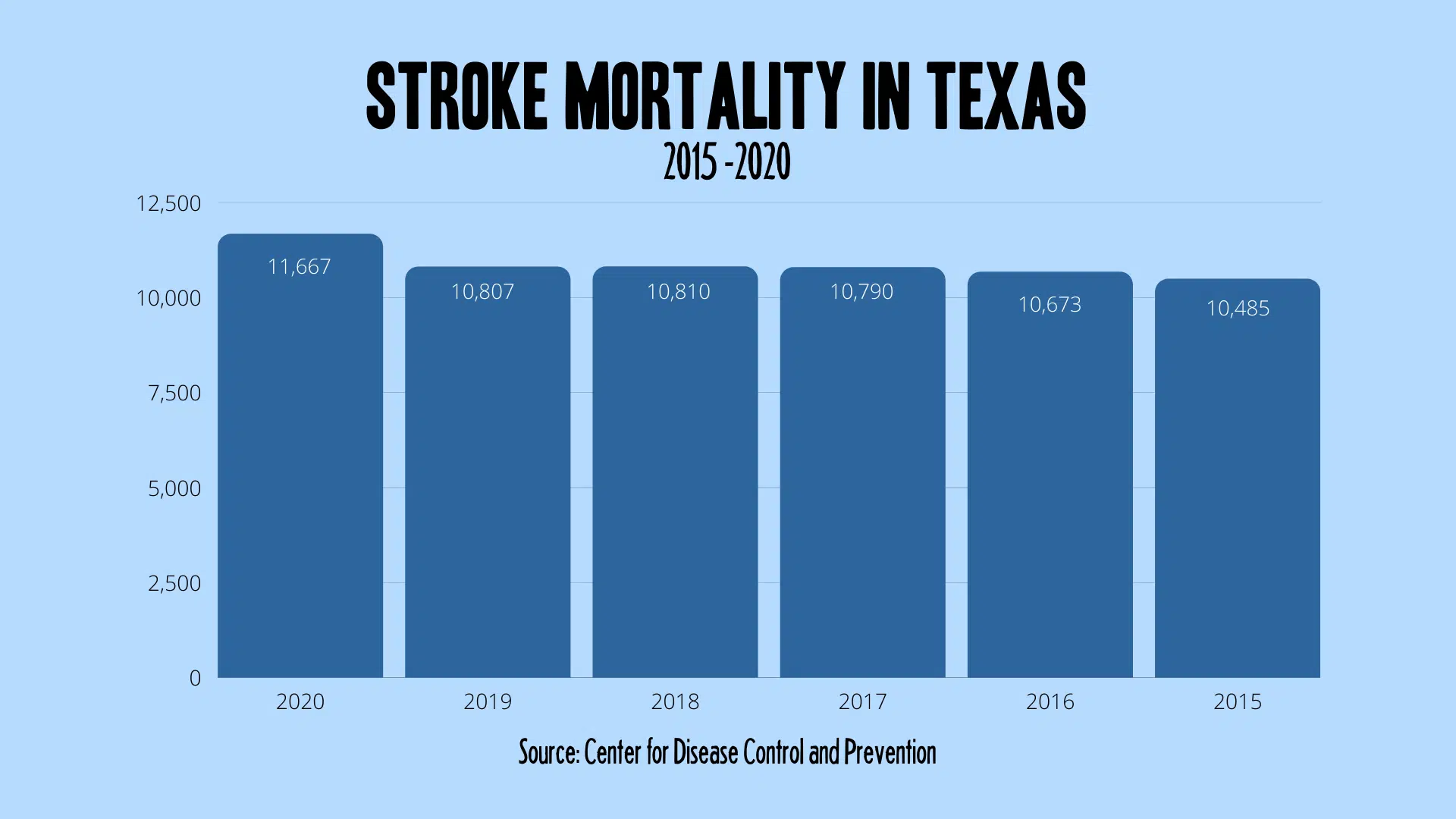The month of May is Stroke Awareness Month and St. David’s Georgetown Hospital is encouraging the public to brush up on their understanding of stroke symptoms, treatment and prevention.
“One of the biggest things that maybe not a lot of people know is strokes are one of the leading causes of death for Americans,” Mary Michelle Lewin, Stroke Coordinator for St. David’s Georgetown Hospital, told Hello Georgetown.
According to the Center for Disease Control, 11,667 Texans died from strokes in 2020, and strokes are the sixth leading cause of death in the Lone Star State.
So, what can someone do if they think they or someone else is having a stroke? What can be done to prevent strokes? Lewin said it all comes down to some important steps.
Symptoms of a Stroke
Most people are aware of basic stroke symptoms, facial droop or weakness in the arms, for example. But, Lewin said, there are other symptoms that individuals should know about.
“Their speech, when they can’t say what they mean, or it’s coming out gibberish, or it’s not sounding what it’s supposed to be like, if it’s something slurred, or sometimes you can’t even voice out your thoughts,” Lewin said. “Dizziness…[that] doesn’t change with movement…the room might be spinning. You can even have a vertigo type of sensation…or vision changes, like blurred vision.”
The American Stroke Association encourages people to remember F.A.S.T. – Face Drooping, Arm Weakness, Speech Difficulty, Time to Call 911.
Responding to a Stroke
If someone suspects a stroke is happening (whether it’s themselves or someone else), go to the emergency room immediately. If you suspect you’re having a stroke, call 911.
“Not a lot of people go to the emergency room right away,” Lewin said. “If there is a delay in going to the emergency department, there can be a delay also in good intervention…because patients that arrive at the emergency [room] within three hours, there is a big possibility that they [will] have less disability within the three months after.”
Every second and minute counts, she added, in order to prevent or minimize long lasting damage.
“My grandfather had his third stroke,” Lewin said. “He delayed his care going to the emergency department, and he ended up [becoming] a quadriplegic, which is both sides of the body being paralyzed. So, that’s my biggest [message] to the community, is to come to the emergency department right away.”
The hospital has resources that are crucial in the early stages of a stroke, including Thrombolytic care, administering medicine to dissolve blood clots, and connecting with other local hospitals for additional care in more intensive cases.
Preventing a Stroke
Lewin said there’s also things people can do to lower their stroke risk, lowering blood pressure, for example.
“If you are more than 140 over 90, or you have hypertension, it’s uncontrolled, [that’s a] big risk for stroke,” Lewin said. “Any irregular heartbeat, like AFIB, or A-flutter, [that’s a] big risk as well too. If you’re a smoker, or you have a high cholesterol, you’re diabetic, if you don’t do too much activity…So, the biggest thing is workout, move. I would suggest changing little bit to a lower sodium and low fat diet, that will help as well too.”
Learn more about strokes and stroke prevention at the American Stroke Association’s website, or by talking with your doctor.




 Business Directory
Business Directory Add Your Business
Add Your Business Job Board
Job Board Coming Soon
Coming Soon Guides and Features
Guides and Features Tech Tip Tuesday with Computek
Tech Tip Tuesday with Computek Education Spotlight with Huntington Learning Center
Education Spotlight with Huntington Learning Center A+ Roofing Tips from APEX Roofing
A+ Roofing Tips from APEX Roofing Restaurants in Georgetown, TX
Restaurants in Georgetown, TX Dog Friendly Establishments in Georgetown, TX
Dog Friendly Establishments in Georgetown, TX Adopt a Pet in Georgetown, Texas
Adopt a Pet in Georgetown, Texas Holiday Guides
Holiday Guides Festival and Events in Georgetown, TX
Festival and Events in Georgetown, TX Downtown Georgetown Guide
Downtown Georgetown Guide Local Assistance
Local Assistance Churches in Georgetown, TX
Churches in Georgetown, TX Summer Camps in Georgetown, TX
Summer Camps in Georgetown, TX Swimming in Georgetown, TX
Swimming in Georgetown, TX Events
Events Add Your Event
Add Your Event Live Music in Georgetown
Live Music in Georgetown Southwestern University Athletics
Southwestern University Athletics Newsletter
Newsletter Newsletter Archive
Newsletter Archive Subscribe
Subscribe Submit Your Photo
Submit Your Photo 2024 Georgetown's Best Awards
2024 Georgetown's Best Awards










Comments